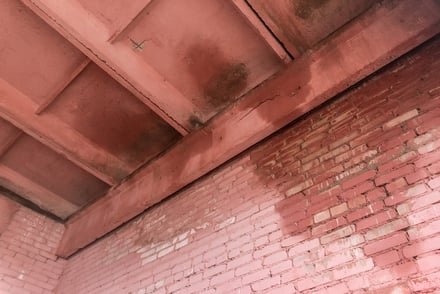 When winter weather forces a pause on outdoor projects, it's an ideal time for owners of historic brick homes in D.C. to shift their focus indoors. Interior brick walls, especially in older homes, often require attention to maintain their visual appeal and structural soundness. While significant problems may be easy to identify, it is equally as important to be aware of the more subtle signs of damage.
When winter weather forces a pause on outdoor projects, it's an ideal time for owners of historic brick homes in D.C. to shift their focus indoors. Interior brick walls, especially in older homes, often require attention to maintain their visual appeal and structural soundness. While significant problems may be easy to identify, it is equally as important to be aware of the more subtle signs of damage.
Inspect Your Mortar for Signs of Deterioration
Mortar serves many functions, such as moisture control and brick stability. Although it is a strong material, it does deteriorate over time. How quickly it deteriorates depends on temperature and humidity fluctuations, water infiltration and other wear and tear. Once it starts to degrade, it can cause problems with loose bricks or cause problems to begin or worsen.
When inspecting your interior brick walls, look for gaps and cracks in the mortar, as well as crumbling or missing mortar. Tuckpointing can often address minor damage, but significant gaps and cracks likely warrant an immediate assessment by a historic brick specialist.
Assess the Condition of Your Historic Brick
Historic brick is softer than modern brick, but that doesn't mean it isn't tough. However, like mortar, brick must be properly inspected and maintained to remain damage-free. Look for deep chips or cracks, loose or shifted brick and bulging sections of wall. A historic brick expert can help repair, replace, and realign damaged brick. Bulging walls are a sign of severe damage and require urgent attention from a foundation specialist or structural engineer.
Know the Signs of Water Damage
Water infiltration is a common issue in historic brick homes, often making itself known through dark or discolored bricks, damp baseboards or carpets and a white, powdery residue called efflorescence.
Basement walls are especially vulnerable to water-related problems and require special attention and care. It's a myth that brick basements are always wet and musty. If you have water infiltration, consult with a historic home expert. They can help identify the water source, help plan drainage solutions, recommend a foundation specialist where needed and tuckpoint your walls to help keep your home fresh and dry.
Ensuring Long-Term Preservation
Regularly inspecting and maintaining your interior brick walls is a crucial aspect of owning a historic home. Connecting with a historic brick home expert can ensure mortar and brick damage is properly repaired using traditional materials and techniques. It is critical to repair older brick with historically accurate lime-based mortar mixtures. Today's cement mixes won't allow your brick to shed moisture effectively.
The newer mixtures have too much compressive strength, making them incompatible with the softer nature of historic brick. Using the wrong method can cause your home's brick to crack and lead to costly repairs.
Because of the specialized skills and materials required, tuckpointing should always be performed by experienced professionals who understand the nuances of working with historic homes. Your home will receive the care it deserves and maintain the timeless appeal and charm of its interior spaces.
Contact Renaissance Development for an expert consultation to assess the condition of your interior brick, or for any other needs you have regarding repair or renovation of your historic brick home.
Tags:
Interior brick walls, tuckpointing, historic brick home, historic brick, Historic Brick Home DC, interior brick repair, interior tuckpointing12/26/24 8:45 AM


